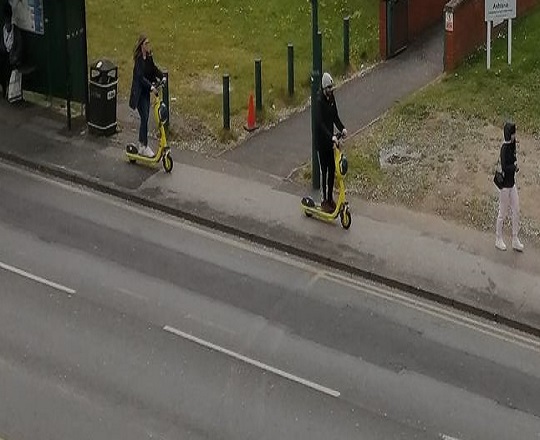e scooters and cycling on the pavement

The pandemic has seen a huge increase in cycling, this coming at a time that escooter trials are taking place at over 40 locations in the UK. The pandemic has also seen a sharp rise in food deliveries by cycle, through companies such as Deliveroo, Uber Eats etc.
Is this a significant move towards a better environment, or a change that can endanger users and pedestrians. Or both perhaps?
Last summer I became one of a growing number of pedestrians to be run over by a cyclist. He was travelling at speed and hit me from behind. Thinking that my injuries were slight I continued my journey, as did the cyclist. Before long I attracted a crowd of people and realised that blood was pouring out of the back of my head. People called an ambulance and 11 hours later I was released from hospital at 4am after a brain scan, and stitches to deep wounds to my head and elbow.
Even before the pandemic, Cycling Weekly said that increasing accidents to pedestrians successively over at least a five year period were “not a cause to leap to conclusions”. Increases had been reported by the Department for Transport and were based upon police recorded injuries. My accident, like most, was not recorded by the police.
Cycling on the pavement has been illegal since the Highways Act of 1835. Few police forces seem to enforce the law on cycling on the pavement.
The truth is that no one knows how many people have been injured, but that more pedestrians are injured by motor vehicles than by cyclists.
We support measures to encourage cycling, but it is obvious that many people are cycling on the pavement because they don’t feel safe on the roads. We also think that many pedestrians may not want to return to the High Street unless they feel safe on the pavements.
Cycling groups are calling for speed limits to be reduced in city centres and for more designated cycle tracks. Personally I don’t think that painting white lines on pavements can solve the problem. This needs to be taken more seriously, as it is in many cities throughout Europe, where major changes are being made to accommodate an increasing number of cyclists.
Cycling Weekly have accused the Government of “airbrushing out any role for cycling” in its recovery plans, and of not even meeting its stated spending commitments.
Deliveroo have been criticised for not offering its riders any training or safety equipment such as helmets and lights. Often inexperienced riders are under pressure to make quick deliveries to bolster meagre earnings. Deliveroo is a £476m worldwide business that is yet to make a profit.
e scooter trials
There are currently over 40 e scooter trials taking place, mainly covering city centres.
Privately owned e scooters are illegal on the roads and should only be used on private land. The sale of them is not regulated. Many can be modified to travel at up to 70 mph.
The trial is of scooters being rented out under the control of Local Authorities. Riders should have at least a provisional driving licence and be insured by the operator. They can travel at up to 15.5 mph. Helmets are advised, but not required.
It is illegal to ride them on pavements, although this rule is widely ignored. There have been a number of injuries to pedestrians, at least 70, but no one knows for sure. Groups representing the partially sighted have reported injuries to partially sighted people tripping over e scooters that have been carelessly left on the pavement. Newcastle imposed a night time curfew after a number of drink driving offences.
The reaction of the Department for Transport has been to regard the e scooter trials as a success so far, and it seems likely that e scooter hire may be here to stay. It is to be hoped that, as with cycling, improvements can be made to keep both riders and pedestrians safe.
With uptake exceeding expectations, we also hope that evaluations of the trials consider the purpose of the journeys made. As an alternative to vehicle use, they may contribute to reducing pollution in cities. But are they being used as an alternative, or for joyriding?
.

